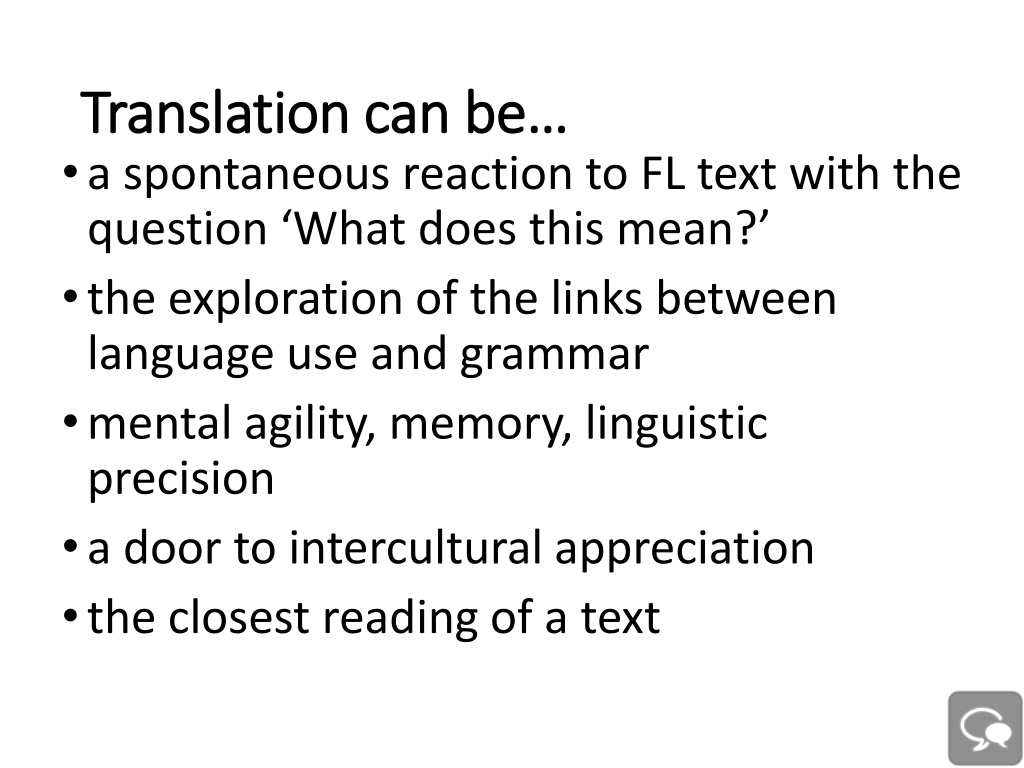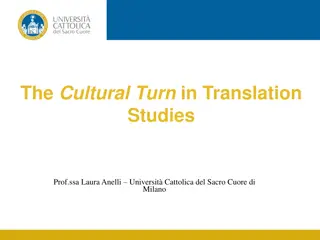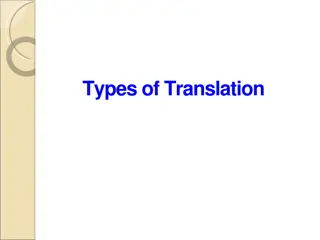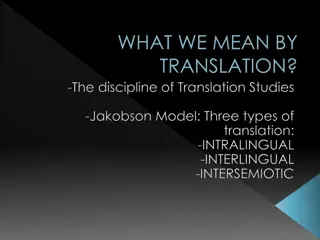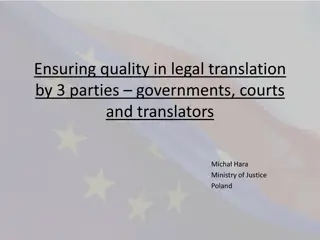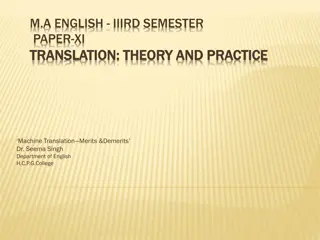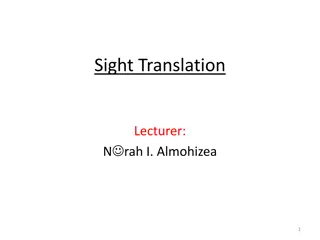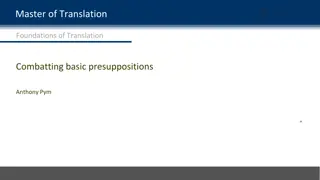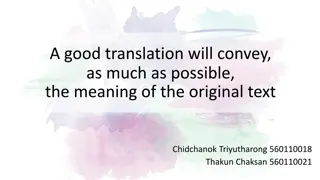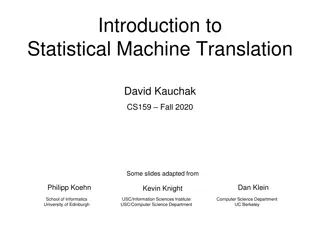Understanding the Art of Translation
Translation can be a spontaneous reaction to foreign language text, involving exploration of language use and grammar while enhancing mental agility, memory, and linguistic precision. It serves as a window to intercultural appreciation and aids in close readings of texts. This content explores various aspects of translation, from deciphering meanings in texts to understanding different linguistic nuances and cultural contexts.
Download Presentation

Please find below an Image/Link to download the presentation.
The content on the website is provided AS IS for your information and personal use only. It may not be sold, licensed, or shared on other websites without obtaining consent from the author. Download presentation by click this link. If you encounter any issues during the download, it is possible that the publisher has removed the file from their server.
E N D
Presentation Transcript
Translation can be Translation can be a spontaneous reaction to FL text with the question What does this mean? the exploration of the links between language use and grammar mental agility, memory, linguistic precision a door to intercultural appreciation the closest reading of a text
o Prohibido transitar con vehculos o Prohibido hacer fuego o Prohibido bajar con animales Where might you see this sign?
1 Why is the last line a question? 2 Can you add 3 more lines to the text? 3 Add a different noun to the end of each line. Yo reciclo papel. 4 How would the advert text be if you used the verb reusar or reducir ? 5 What does the final line tell you about how you form Do you questions?
Bonjour Je'm appelle John Triple translation technique The target language A literal translation How it is said in English and any other mother tongue present in the classroom J'ai un fr re Il's appelle Luke When gently recommended to check what he had written, he could not see anything wrong. When it was suggested he check the position of the apostrophes , he was astonished. "Oh," he said, " I thought it was like the English I'm called He's called. Heather Randall Patterns and Procedures: Focus on Phonics and Grammar (Classic Pathfinder) 2005
Ingls Espa ol Alem n Do you have a pet? Tienes un animal? Hast du ein Haustier? Does he play tennis? Juega al tenis? Do they live in Italy? Spielt er Tennis? Wohnen sie in Deutschland? Viven en Italia? Does he write letters? Escribe cartas? Schreibt er Briefe?
Ser o Estar No puedo esperar m s sin tenerte junto a m Desesperaci n es que no est s aqu Que no est s para verme caer Ni me pueda tu voz levantar Que dif cil se vuelve lograr respirar No quiero ser No quiero hablar No quiero estar Si tu no est s aqu
Translating You cannot often translate word-for-word. Mostly you need to paraphrase find a phrase that has the same meaning but uses different words. Once you have the meaning of the sentence in your head, play with the order of the words until you have English that sounds natural when you read it. If you look up a word in a dictionary, don t accept the first definition you find. Try different possibilities in context and see which one fits best. The golden rule: Read aloud what you have written. If it doesn t sound right to you, it probably isn t.
Estoy hasta las narices de mi hermano. Me tomas el pelo? Conozco la ciudad como la palma de la mano. El pastel est para chuparse los dedos. M s vale p jaro en mano que ciento volando Cuesta un ojo de la cara.
Ich verstehe nur Bahnhof. Das ist Banane! Ich bin fix und fertig! Lieber sp t als nie.( aber lieber nie zu sp t) Hast du einen Vogel? Es ist noch kein Meister vom Himmel gefallen.
